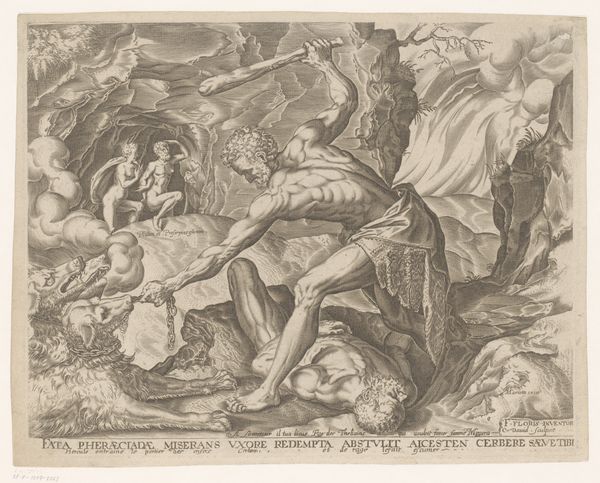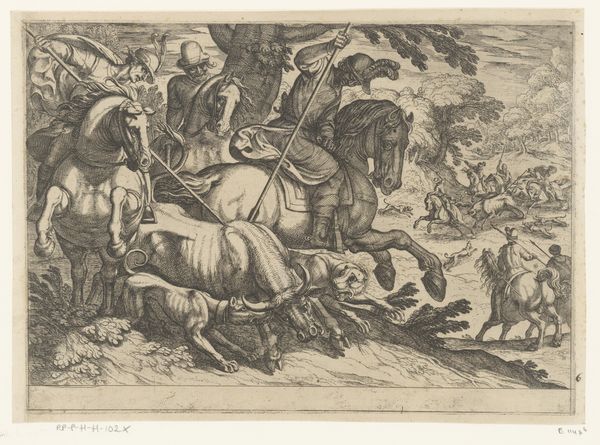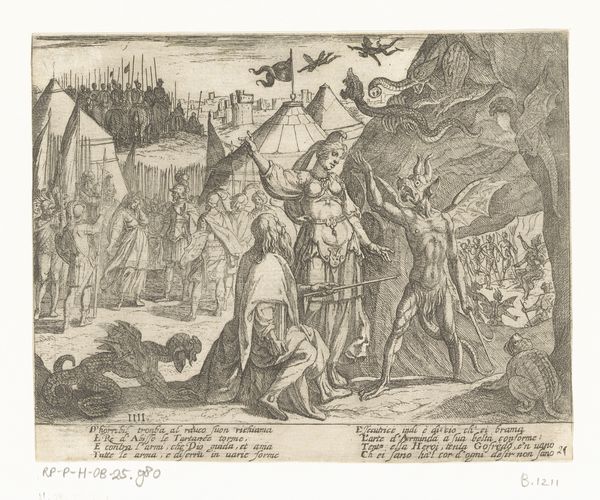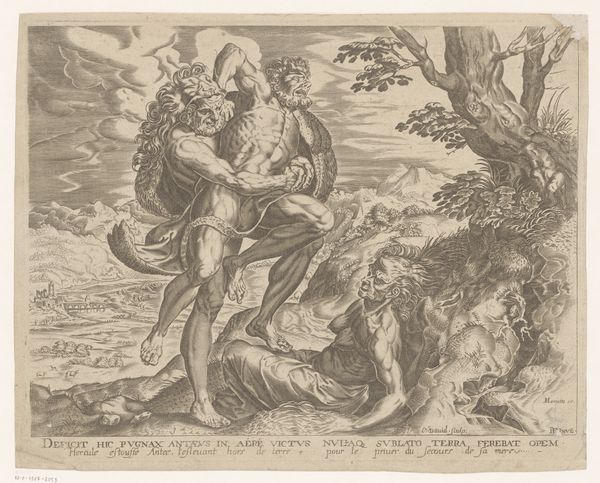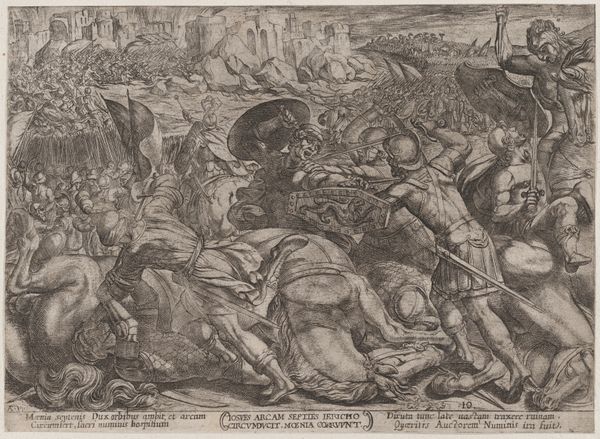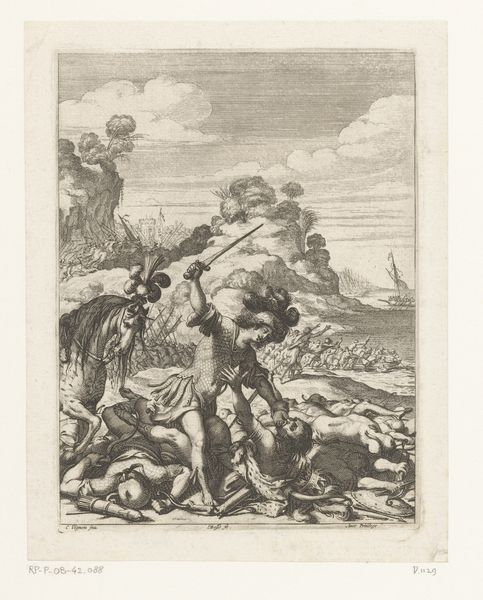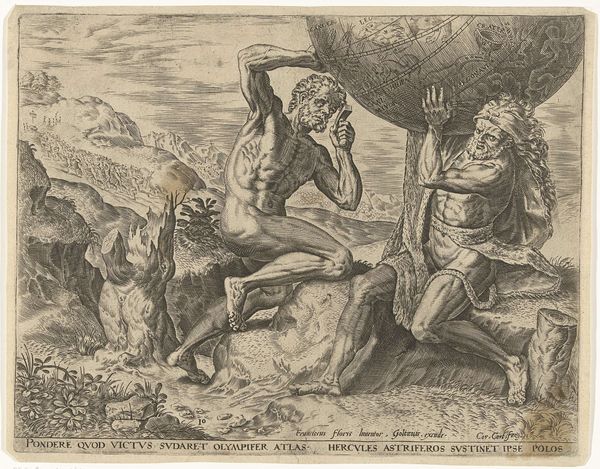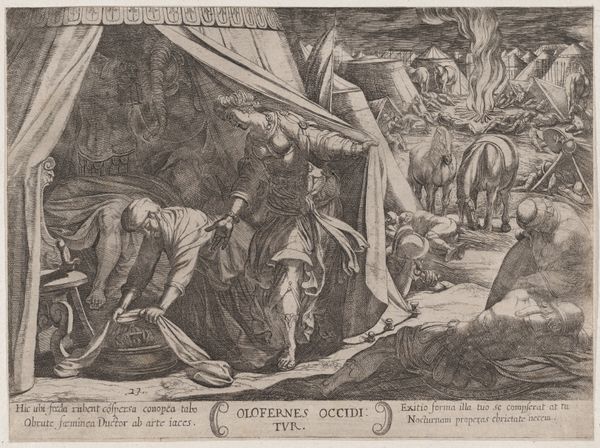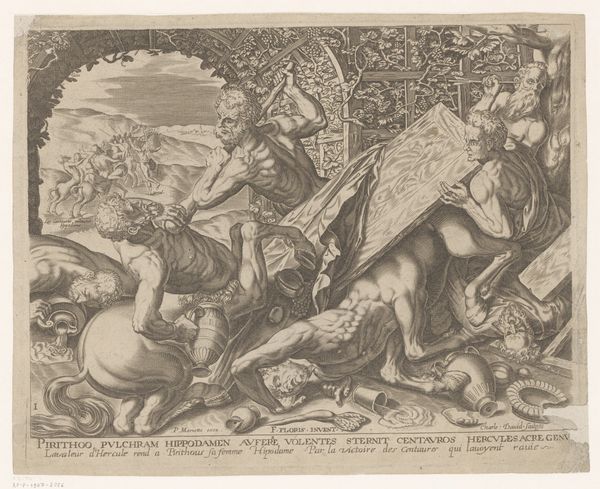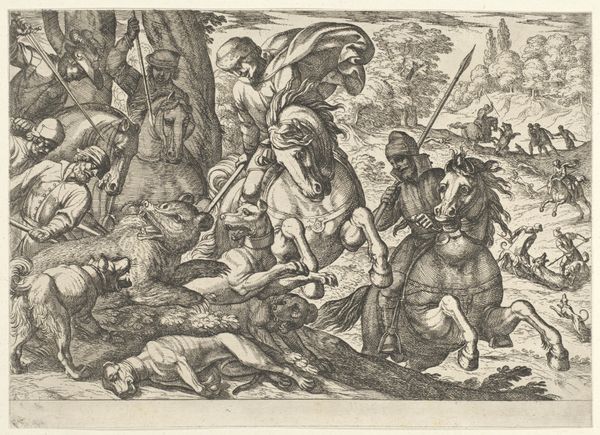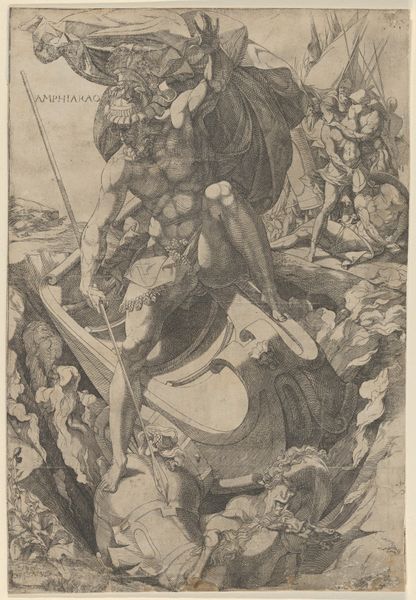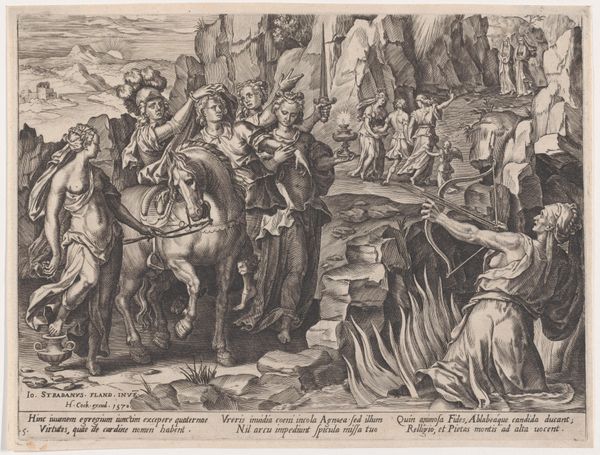
print, engraving
#
ink drawing
#
baroque
# print
#
landscape
#
figuration
#
pencil drawing
#
history-painting
#
engraving
Dimensions: height 227 mm, width 289 mm
Copyright: Rijks Museum: Open Domain
Charles David made this engraving, Hercules voert Diomedes' lijk aan de paarden, around the 1630s. The image illustrates one of the Labours of Hercules in which he defeats the tyrant Diomedes, who fed human flesh to his mares. The print translates classical mythology into a drama of social justice. The figure of Hercules, a demi-god famed for his strength, intervenes in a society that has been corrupted by tyranny. The picture suggests a world in which rulers have become monstrous. The story would have resonated with audiences in the Netherlands at this time. The Dutch Republic had recently won independence from Spain after a long struggle against what they regarded as an unjust ruler. They drew parallels between their own resistance and classical myths of liberty. To understand the full significance of this image, we can consult sources from the period such as political pamphlets and popular literature. These materials can reveal how classical stories were used to comment on contemporary events and to promote certain political ideals.
Comments
No comments
Be the first to comment and join the conversation on the ultimate creative platform.

